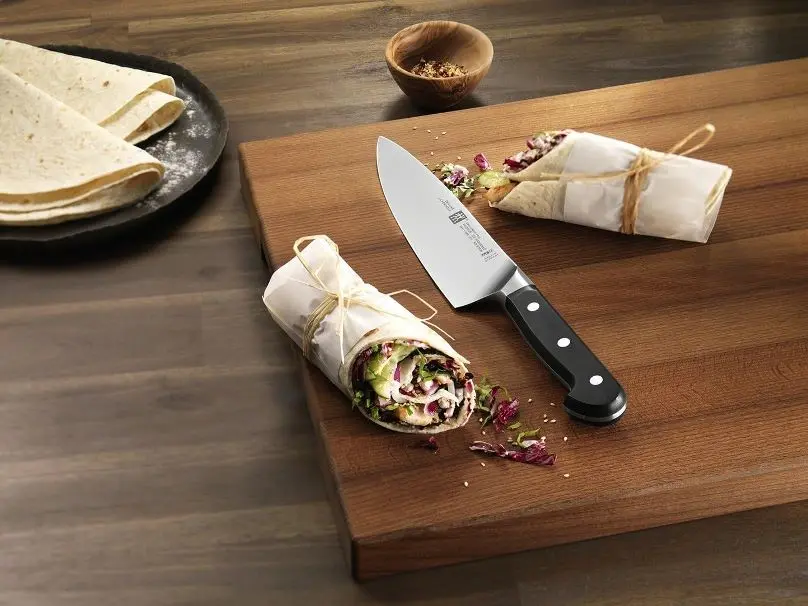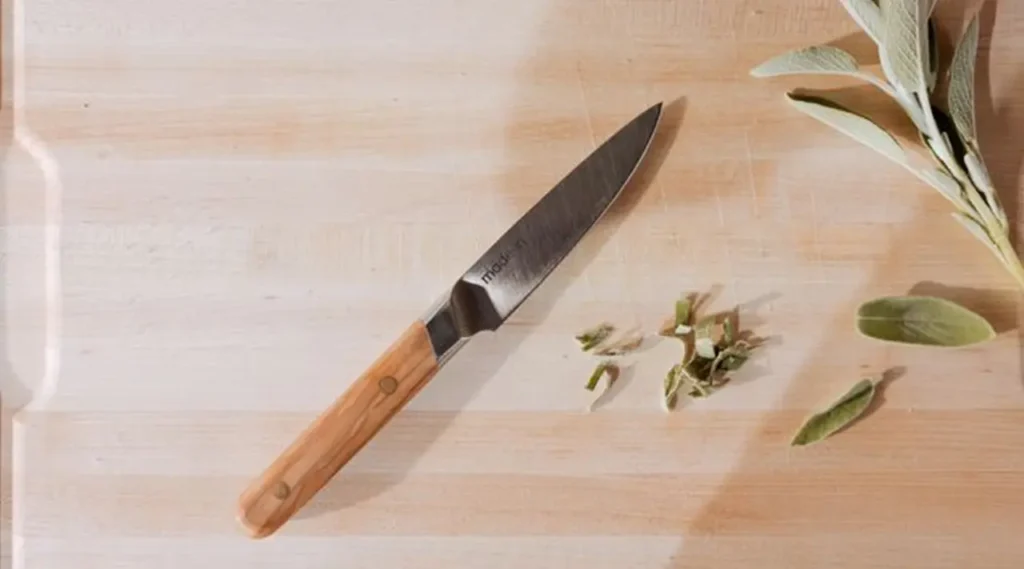We independently review everything we recommend. When you buy through our links, we may earn a commission.
Kitchen Knife Materials: A Buyers Guide to Kitchen Knives
With so many different types and style of knives in the world, it is not surprising at all to me that there they would be constructed of all kinds of materials. Not all knives have the same construction or use the same materials either.
Some knife materials are going to be more expensive or harder to work with which will in turn make the knife a tougher buy. While other knives made with cheap materials or widely used materials will bend for a cheaper knife in the end.
When shopping for a kitchen knife you must also think about what materials was used to construct the knife, as this will not only protect it, but keep it in working order for some time to come.
In this article, we will cover some of the common kitchen knife materials used to construct the blades and handles of the knife. Then we will go over basic types of knives you need and their uses.
What is the best material for kitchen knives?
High-carbon steel is the best material for a kitchen knife if you’re after superior sharpness and edge retention, though it requires more maintenance due to its tendency to rust. On the other hand, pure stainless steel is more resistant to rust and corrosion, making it low-maintenance but often less sharp and durable over time. For professional chefs or serious home cooks, high-carbon (non-stainless) steel is the preferred choice for precision, while stainless steel works best for those seeking convenience and longevity.
The Most Common Knife Blade Materials
There are different knife material used for forging knives. Some of the most popular quality blade steel include high carbon steel, stainless steel, Japanese laminated steel, and precision ground tool steels. Our steels are great for both forging and stock removal.
While there are only a few types of metals used in today’s knives, steel still reigns supreme in the market. There are also several different types of steel or combinations of steel that are used in knives as well.
Stainless Steel
Of all the steel types, stainless steel is the most basic and most affordable when it is used to construct the blade. It is used in a variety of knives, but don’t expect them to cost much because it is the bottom of the barrel when it comes to materials. It doesn’t hold an edge very long and may be prone to damages but it is rust and corrosion proof.
High Carbon Stainless Steel
This is one of the higher end types of steel. Carbon is added to steel to strengthen the blade and harden the steel. This allows the knife to hold an edge for longer periods of time and become resistant to most breaks and damages. Many higher end knife companies, specifically in Germany, use high carbon stainless steel to construct their knives.
Low Carbon Stainless Steel
This is also a higher end steel that can be found in Japan mostly to make blades. The metal makes the blade very sharp, one of the sharpest and will hold an edge. But it is also very brittle and can break fairly easy. The blades need to be taken care of regularly in order to last a while.
Damascus Steel
This type of steel traditionally only comes from one part of the world but can be produced in many other areas of the world too. It is one of the strongest metals and the process of constructing the blade can be very difficult and times consuming. This metal is used to forge blades by pressing several layers of steel over and over to strengthen the blade.
Ceramic
This material is used for many common knives but is not a metal. A blade constructed with ceramic can be one of the sharpest knives around and can hold an edge for a very long time. It however cannot be sharpened like most other types of knives and it can be very fragile. So, if they are dropped, they can break easily or shatter.
Knife Handle Materials
The handle of the blade is just as important as the blade itself in terms of construction and materials used. Aside from the materials used, the shape of the handle can allow the user to control the knife better or create comfort for the user as well. Sometimes, added grips will be added to the handle to give comfort and create slip resistance which is critical when dealing with wet foods.
Plastic
There are many types of plastic handles in the sense of the combination of ingredients in the plastic. Some can be very useful and dishwasher safe while others are just cheaply constructed. You need to be very weary of a plastic handle because it is at the bottom of the totem pole when it comes to materials.
Wood
Wood handles are the original types of materials used for handles and they are still widely used today. Although most wooden handles are made with stronger and long-lasting woods like Pakkawood or dark cherry wood. They cannot be placed through the dishwasher and need to be cleaned by hand because bacteria can get in the grains of the wood causing it to break or faulter over time.
Composite/Synthetic
Composite or synthetic handles are similar to plastic handles but are newer and advanced so they have the good qualities of plastic without any of the downfalls. These handles can be found on many high-end expensive knives as well.
Metal
Metal handles are also used. They are usually just a continuation of the blade or just one solid piece of metal that is the handle and the blade together. They can be troublesome if they are not pitted with grips or have additional grips placed on them. If you have a metal handle you will need some kind of slip resistance as well.
Your First Four Knives:
Chef Knife

The chef knife is the most used knife in the kitchen. It is one of the most versatile knives around and can handle just about any type of cutting application. While it could be used for everything, there are other knives that will perform better in the long run for some things. Even though they do come in different sizes, the 8” chef knife is the most popular. Another knife that is very similar to the chef knife is the santoku knife which is more like the Japanese version of a chef knife. They have rounded tips at the end and shorter blades for extra control when handling them.
Boning Knife
This type of knife can also be referred to as a filet knife. It has a long and slender blade that is very sharp and flexible as well. The flexibility of the blade is crucial when you need to filet a fish or debone a chicken. This knife is essential in any kitchen set.
Paring Knife

This knife is the smallest of all the knives coming in at about 3 or 4 inches in length. It is used to cut small fruits and make specific cutting applications on foods. It is common to find one of these knives behind a bar for cutting lemons and limes. If you need to cut food in your hand this knife will be the best choice.
Bread Knife
The bread knife is one of the longest knives in the kitchen. It has a long blade with a strong handle and the edge is usually serrated. This helps to cut through soft breads without tearing the bread.
Conclusion
No matter what the blade or handle is constructed from, you need to make sure that the material is of high quality otherwise it will not perform or last very long in your kitchen. Make sure to do your research when you are looking to buy a new knife.
